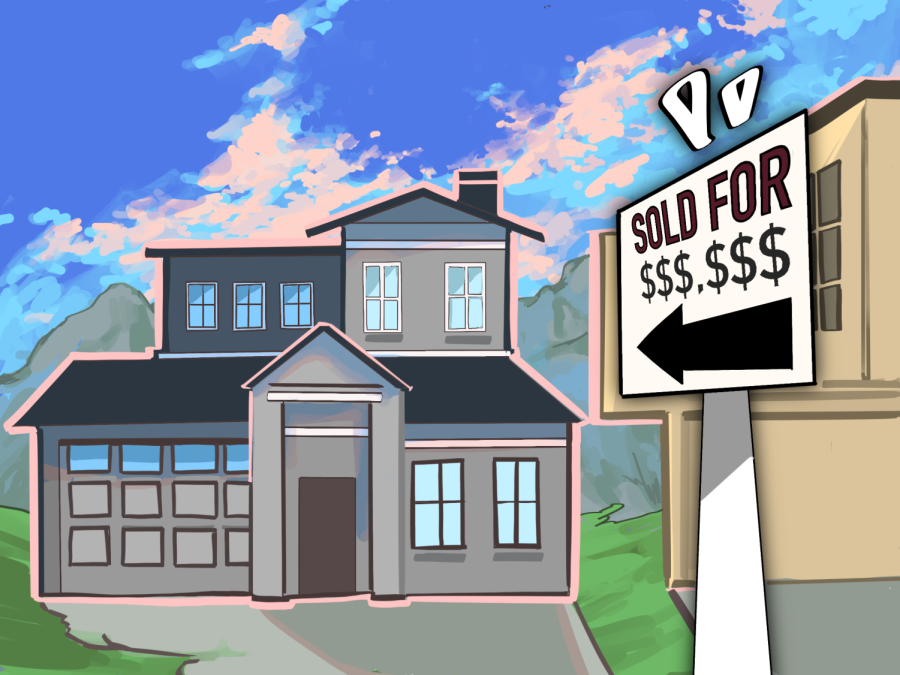NIMBYism – The Antithesis to the American Dream
NIMBYism often makes building more affordable housing impossible.
Housing crisis: a term thrown around during every election, promised yet rebuked once one is in the office. However, for a problem so large the answer seems so clear: Build more affordable housing. Yet when the answer is proposed, NIMBYs strike back.
The term “NIMBY” stands for “not in my backyard” and is used to describe people who oppose nearby development, such as apartment complexes, affordable housing, and homeless shelters. The NIMBY phenomenon lies rooted in the impulse to object to newcomers, and it transcends the boundaries of race, class, and culture. In a nation whose roots lie in racial and class separation, whose expansion was founded on the basis of exclusionary housing, and whose main vehicle of generational wealth is homeownership, NIMBYism goes further than just halting construction. It decides our neighbors, our schools, our communities, and ultimately, the structure of American civilization. Ultimately, NIMBYism continues to permeate throughout the Bay Area, and the NIMBY’s “concerns” for opposing developments conceal their true targets. Spoiler alert: it’s not the developers.
NIMBYs have existed in the Bay Area since the dawn of time, with many cities such as Milpitas and San Jose being founded on the basis of exclusionary zoning and redlining. This includes laws restricting what type of houses can be built in an area or even discriminatory practices that deny individuals housing in certain areas based on ethnicity.
In recent years, the NIMBY phenomenon has presented itself in organizations such as Liveable California, Catalysts for Local Control, and Better Cupertino. These organizations have fought back development through organizing en masse to complain to local governments against new local developments, or overloading developers with lawsuits citing environmental claims. These methods may sound rather kitschy, if not for being surprisingly effective. Local opposition in Marin County, one of the wealthiest and most non-developed (largely park land or county open space) counties in the Bay, has stalled a small development of houses on a hill for decades. In Contra Costa County, a large development for working-class families had its approval revoked due to a ruling based on environmental concerns early this year.
Therefore, it comes as no surprise that Fremont, a wealthy suburb whose median household income is $142,374, houses its own assortment of NIMBYs. Their target of choice? Homeless shelters. Despite Fremont’s homeless crisis skyrocketing by nearly 69% over the past three years, far higher than cities of similar size and wealth in the Bay Area, opposition to homeless shelters remains as staunch as ever. In 2019, protests erupted against the then-proposed Housing Navigation Center, a transitional housing development designed to help homeless individuals regain housing independently. Early this year, a petition was created opposing the conversion of Motel 6 to permanent and supportive affordable housing. This petition, citing concerns over child safety, garnered the support of over 3000 individuals. Note that the petitioner’s website, https://www.betterfremontca.org/ is shown to have misleading information (Project Homekey is not a homeless hotel but a complete conversion of a motel to a housing complex) and provides citations from extremely questionable sources (PragerU, a conservative alt-right media channel, and Christopher F. Rufo, the person behind the sensationalist Twitter posts regarding Critical Race Theory).
The reality is that the Bay Area has an extreme housing crisis. NIMBY arguments over environmental concerns, overcrowding, and crime do not justify the fact that average rent in Fremont is just shy of $3,000 per month, nor do they find any way to provide aid to the 161,458 unhoused people in California of which 1026 derive from Fremont. In an area where liveable wage is $28, and minimum wage is $15.75, the people NIMBYs are excluding are the working-class, including the mostly employed unhoused. While we should address the mental health crisis, income inequality, improve our education system, and much more, these are long-term solutions. What we need is housing, and we need it now.








